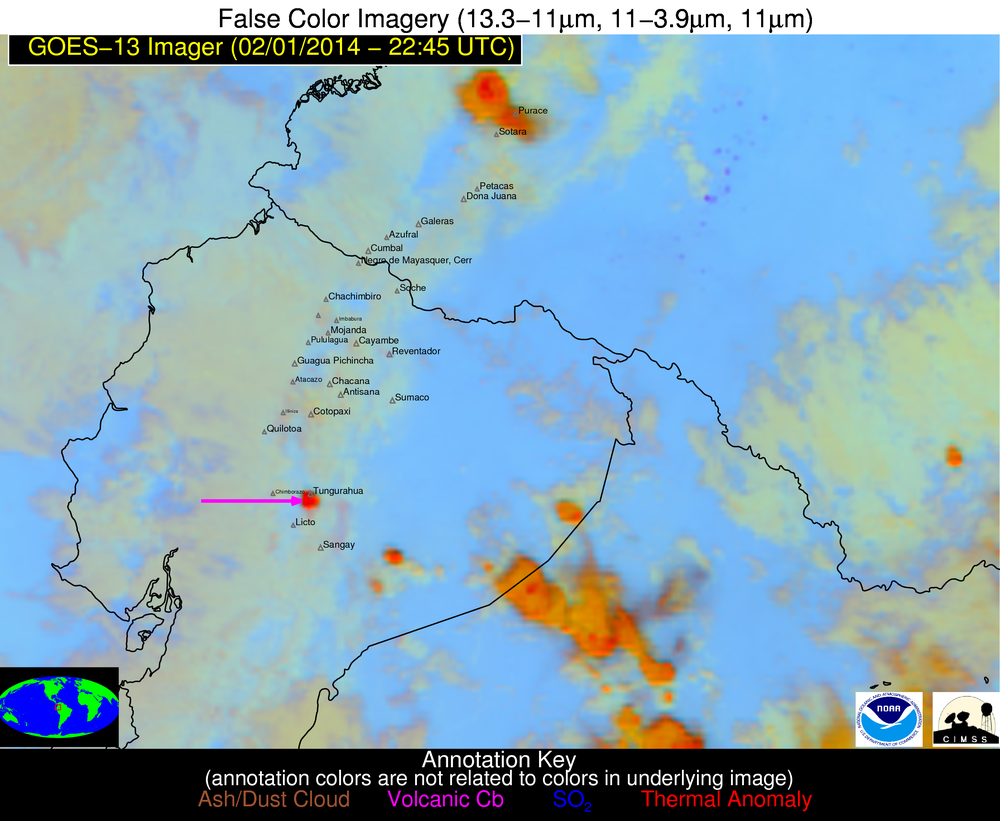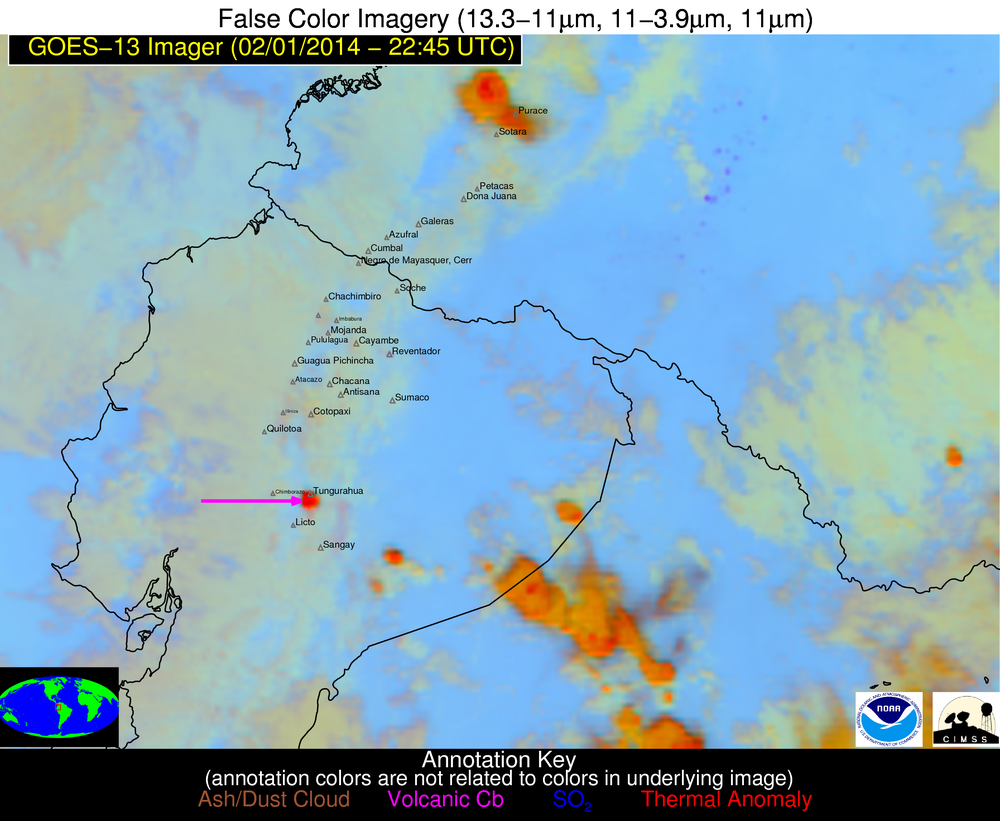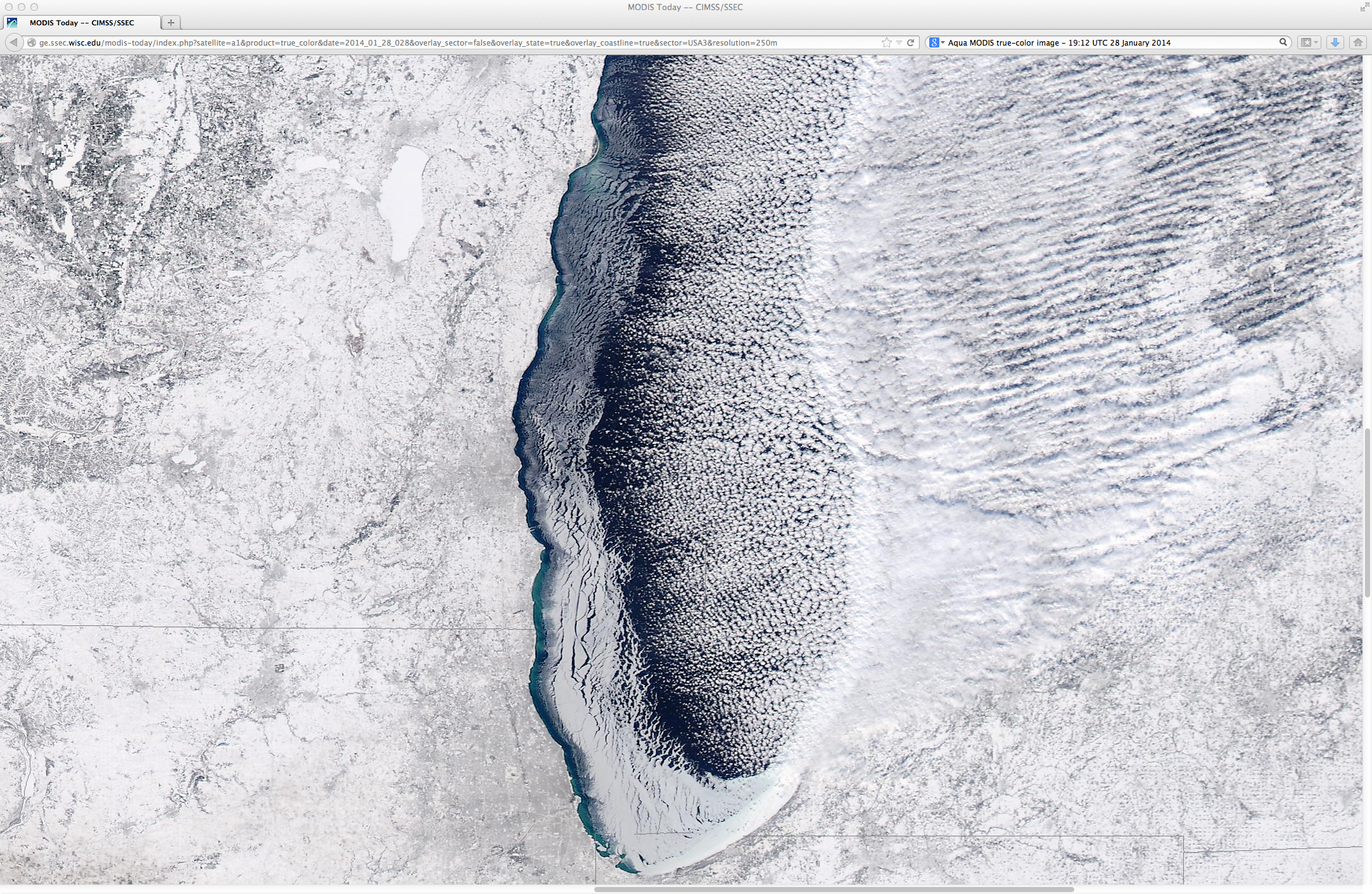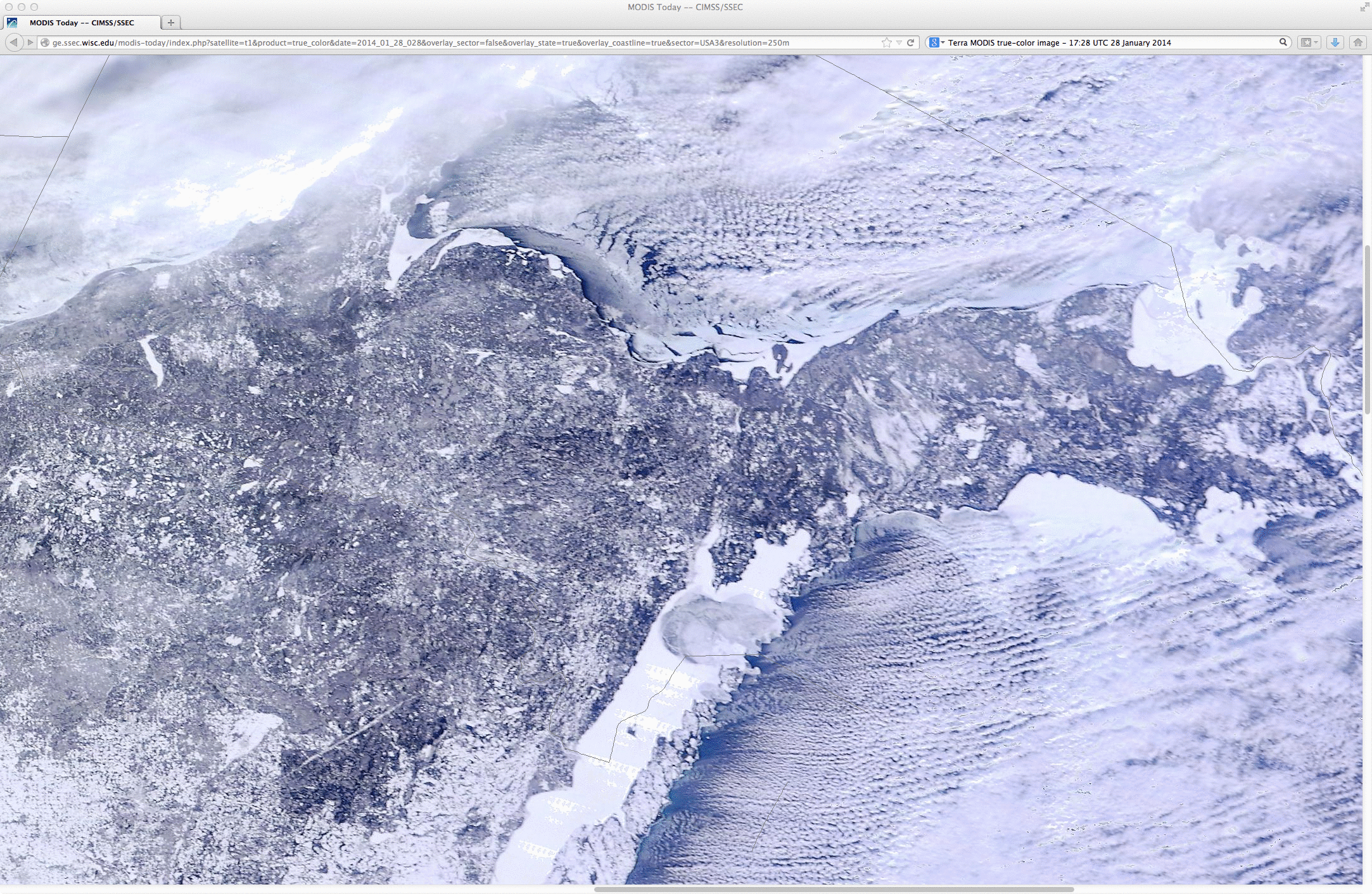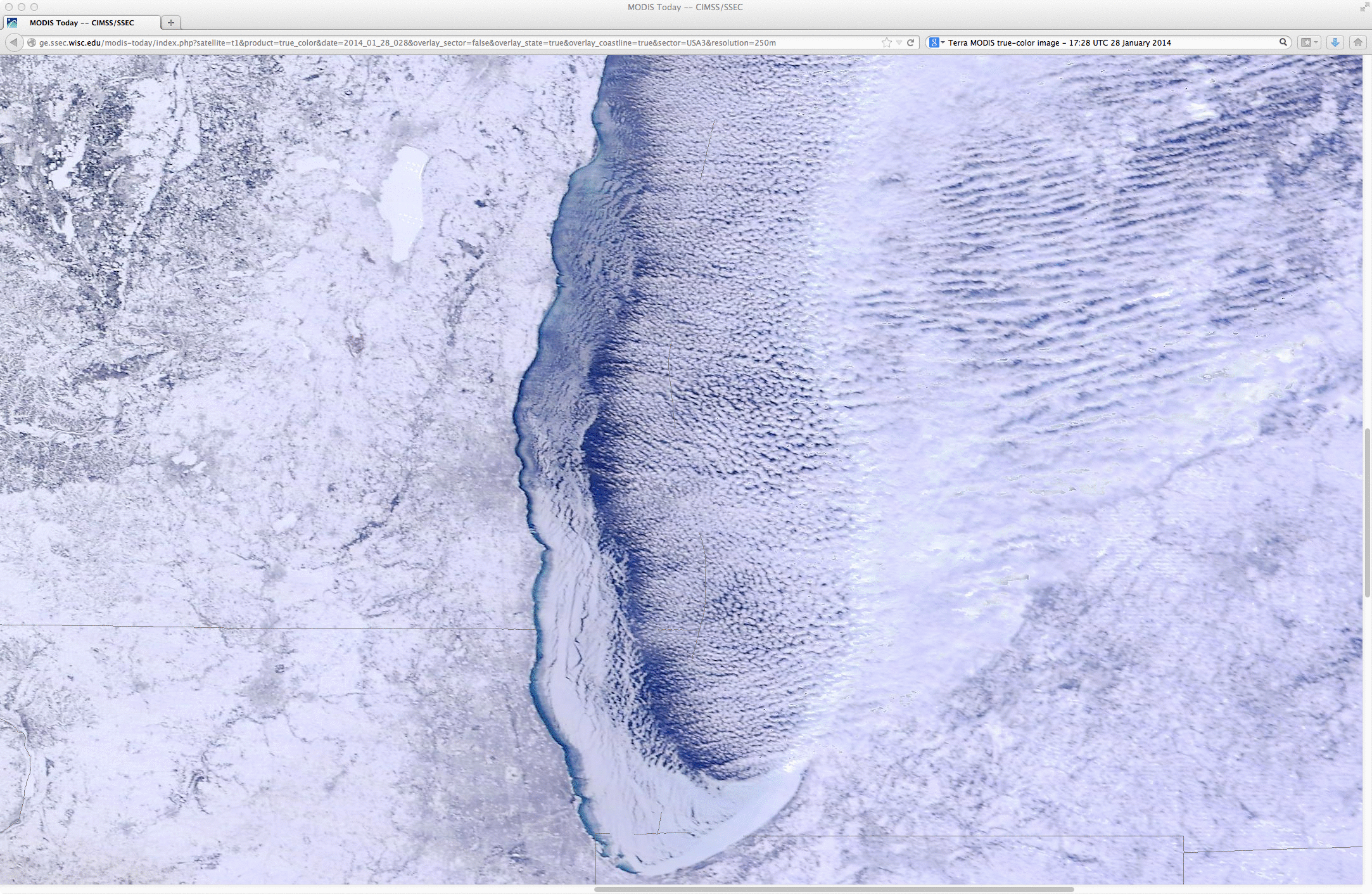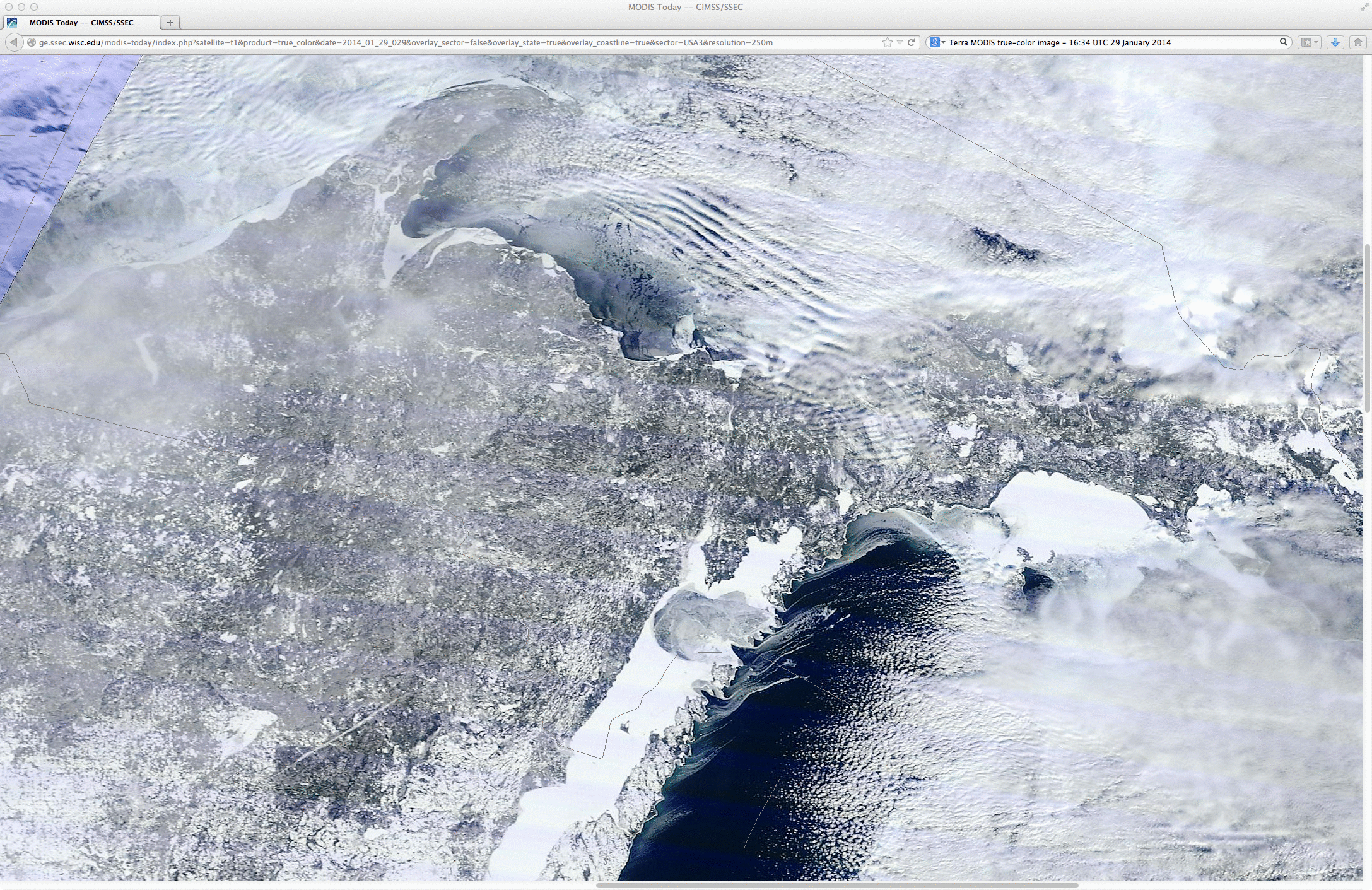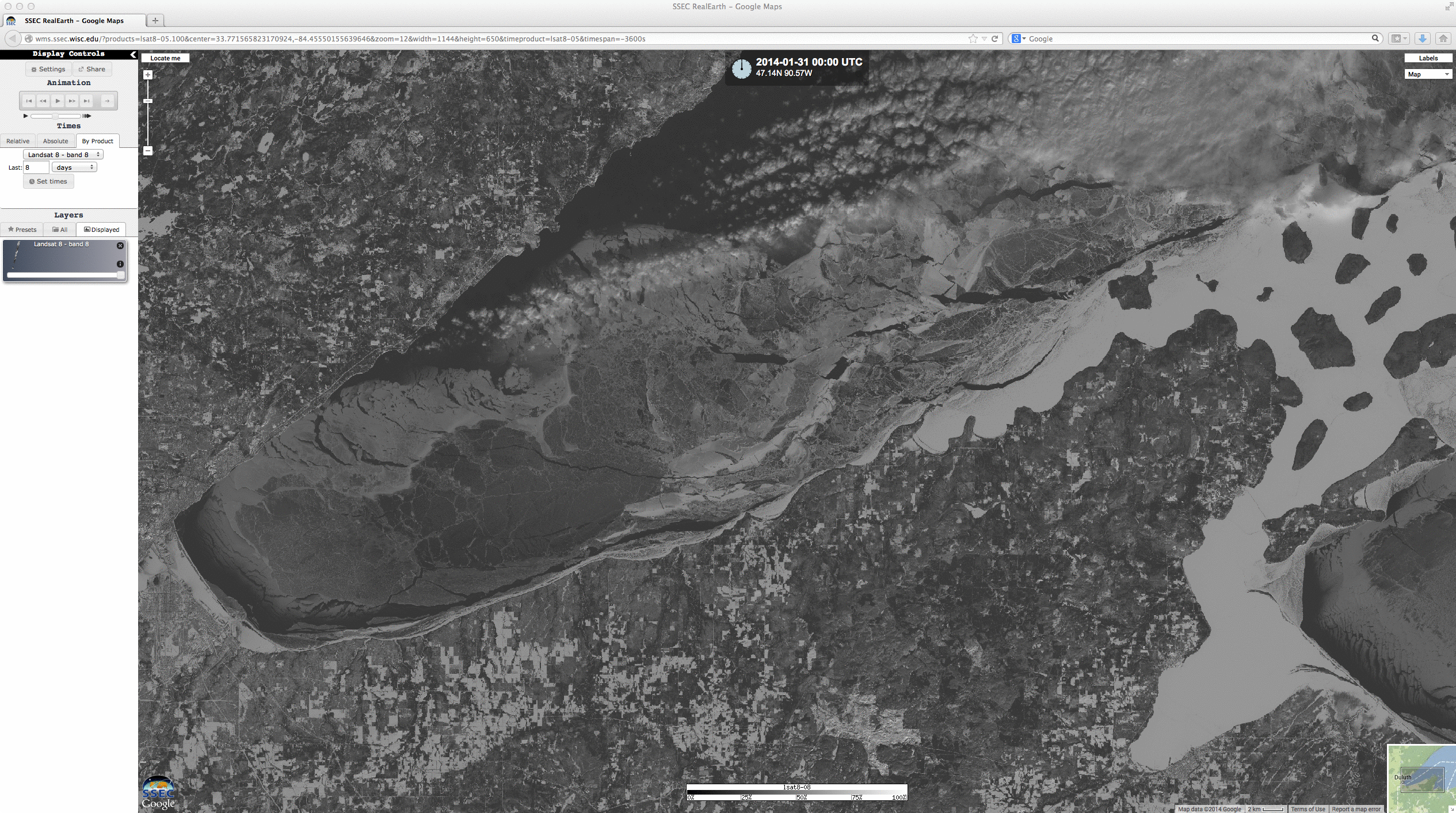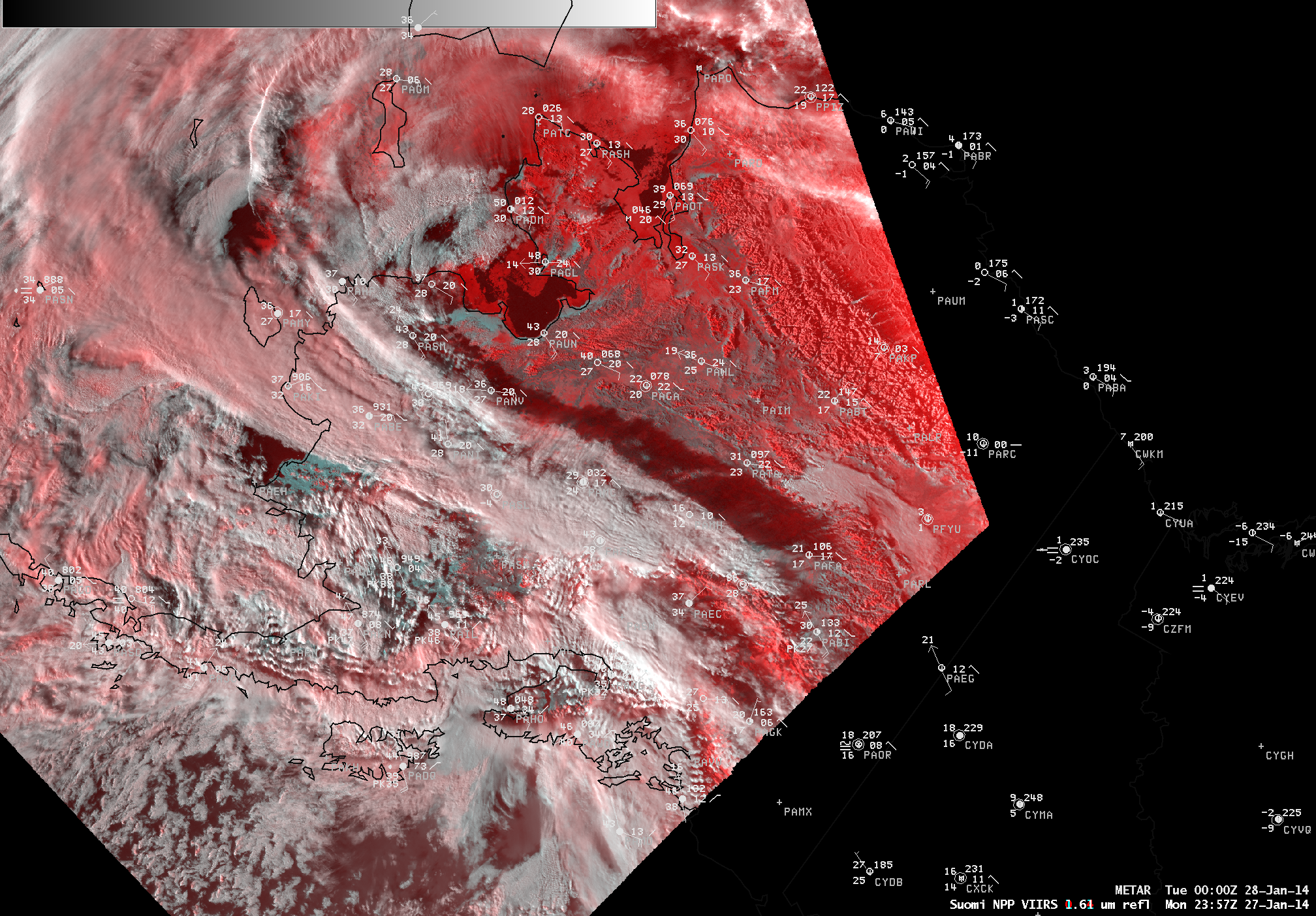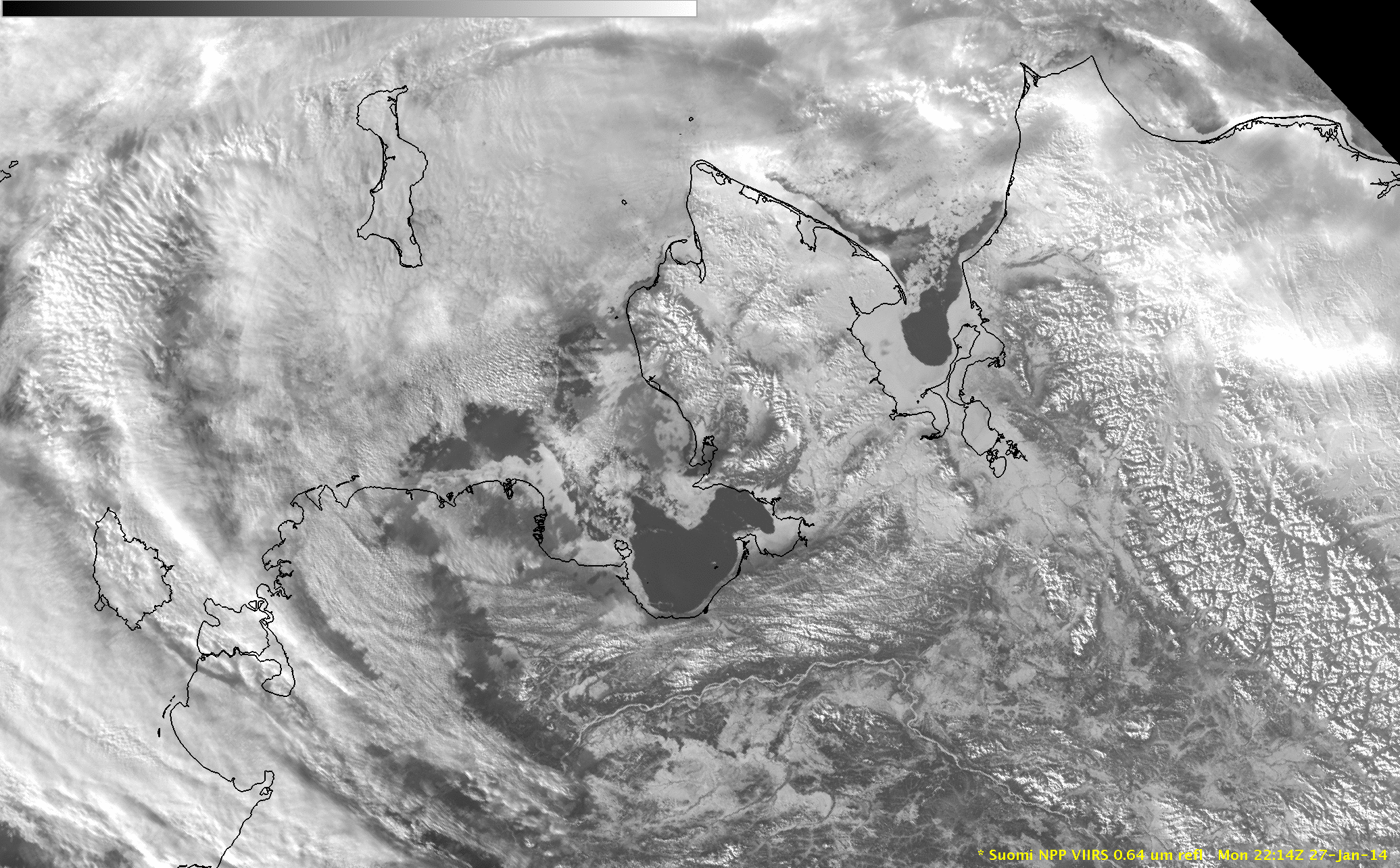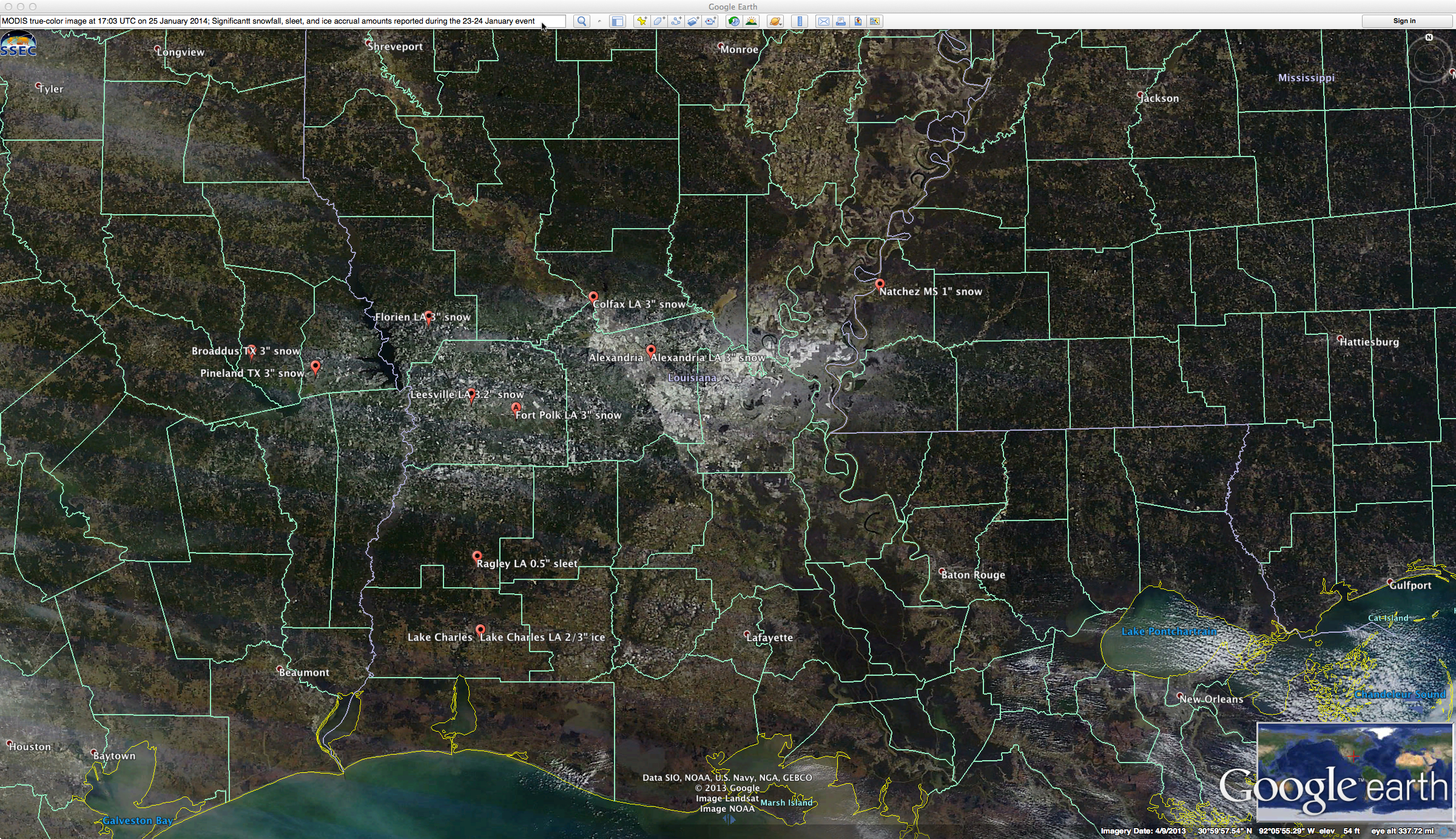After 2 days of renewed activity, the Tungurahua volcano in Ecuador produced some minor eruptions punctuated by a single large eruption on 01 February 2014. GOES-13 false-color Red/Green/Blue (RGB) images specifically tailored to help identify and track volcanic features (above; click image to play animation) showed (1) the southeastward drift of the initial volcanic plume (estimated to be as high as 26,000 feet) from 19:45 – 22:15 UTC, followed by (2) the rapid expansion and southward drift of the larger volcanic plume (estimated to be as high as 45,000 feet) after 22:45 UTC, and (3) another smaller volcanic plume (estimated to be as high as 23,000 feet) drifting southeastward after 02:45 UTC on 02 February.
McIDAS images of GOES-13 3.9 µm shortwave IR data (below; click image to play animation) revealed the presence of a distinct “hot spot” (dark black to yellow to red enhancement) at the summit of the volcano after 22:45 UTC — the hottest pixel detected was 338.5 K or 66.4º C at 00:45 UTC on 02 February.
As the sun was setting, the rapidly-rising volcanic ash plume associated with the stronger eruption cast a long shadow toward the east-northeast on the 22:45 UTC GOES-13 0.63 µm visible channel image (below).
View only this post Read Less


